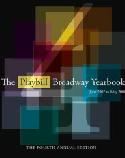SITE GUIDE
SEARCH
REVIEWS
REVIEW ARCHIVES
ADVERTISING AT CURTAINUP
FEATURES
NEWS
Etcetera and
Short Term Listings
LISTINGS
Broadway
Off-Broadway
NYC Restaurants
BOOKS and CDs
OTHER PLACES
Berkshires
London
California
New Jersey
DC
Philadelphia
Elsewhere
QUOTES
TKTS
PLAYWRIGHTS' ALBUMS
LETTERS TO EDITOR
FILM
LINKS
MISCELLANEOUS
Free Updates
Masthead
A CurtainUp Review
Edward Albee's Occupant
By Elyse Sommer
|
. . . you got somebody in you right from the start, and if you're lucky you figure
out who it is and you become it. People who don't become are. . .well, look around you.— Louise Nevelson
|

Mercedes Ruehl as Louise Nevelson
(Photo: Carol Rosegg)
|
Nevelson's own success as an artist was delayed much longer than this play. While she always worked as an artist, her breakthrough with the incredible all black and all white wood sculptures that are most often associated with her name, didn't come until she was close to social security age. And so, Albee's tribute to her perseverance and talent —- and, yes, her enormous ego — is not just a bio-drama but a rumination on knowing how to figure out how to become the best we can be. As much as being a homage to Nevelson, Occupant, is clearly intended to send us out of the theater contemplating who it is we might become. And so it will.
Anyone expecting one of Albee's more enigmatic plays like The Goat, the premiere production of which also starred Ruehl, is likely to be disappointed. Except for the theatrical conceit of structuring Occupant in the format of one of those interviews conducted at the 92nd Street Y by the likes of Charlie Rose and Leonard Lopate— but with the interviewee brought back from the grave— this is Albee at his most straightforward. It's a style supported by the astute, stay-out-of-the-way direction of Pam MacKinnon whose previous collaborations with Albee include Pete and Jerry and The Play About the Baby in Philadelphia and Chicago. In fact, true to its story telling format, this is more a lecture than a play in the conventional sense. While I wouldn't put this in the top rung of his oeuvre, it is Albee at his most accessible, and with Ruehl's mesmerizing performance, you're unlikely to be bored.
Though there are no tough to puzzle out metaphoric meanings, Albee's dry sense of humor and subtle way of revealing new layers in his characters and the way they interact is abundantly in evidence. Ruehl is as close as you can get to having the real Nevelson come back from the grave. She looks the part. She sounds the part. She conveys the full flavor of Nevelson's flamboyant and complex personality.
Fine actor that he is, Larry Bryggman playing a combination M.C and interviewer, creates a strong and often droll connection with both the ghostly Nevelson and the audience. As a challenging rather than fawning interviewer, he deflects potential complaints from Nevelson aficionados that there's nothing new here. Actually the fact that some of her recollections have been widely circulated elsewher adds another question to the thoughts this piece leaves you with: How accurate are people's memories about events that shaped them? What lies beneath their often consciously or unconsciously edited self-revelations?
An exhibit of Nevelson's work organized some years ago by the Jewish Museum, placed the art on display in an autobiographical context. It dramatically clarified her choice of materials and colors, and tied the size of her pieces to her life as a woman and immigrant during eight decades of the 20th century. While the last part of the play now at the Signature does talk about the full flowering of her passion for the wood used in her famous sculpture, the text accompanying the museum exhibit went into much more detail about her attraction to wood, tracing it back to her infant memories of the forests of Ukraine and her father's working as a woodcutter and junkyard owner in Rockland, Maine; it also noted that when she was in her forties, the Jew in her rejected metal used by many artists as too closely associated with war.
Naturally, the descriptive legend of any museum exhibit is always just an accompaniment to the art itself. On the other hand, the stage isn't an art exhibit. And while there are a few Nevelson-like sculptures on the Signature stage, what we get is a glimpse at the person behind those sculpture, and the long journey it took to become who she was. The focus is on the personal rather than the methodology of the artist or her actual work— marriage, motherhood, bouts of depression, ruminations on famous artists and writers she knew and, of course, her colorful outfits and the double sable eyelashes. What both the above mentioned museum exhibit and Albee thus confirm is that the artist and the artist's work are all of a piece, like those disparate pieces of wood in one of Nevelson's assemblages.
Set designer Christine Jones has cloaked the simple set with a look that suggests the famous Nevelson style and palette. The designer brilliantly helps Albee to conclude his lecture-interview-homage with a jaw-dropping bang. Thanks to Jane Greenwood's costumes, Ruehl is herself a work of art.
The title comes from an anecdote about when Nevelson's final days as a lung cancer hospital patient. She had her big as life, all capitalized name on her door replaced with a lower cased "occupant" (as she wryly explains to the interviewer "there's no privacy anywhere." For Albee, that word also signifies how a creative person occupies his space on this earth by living life fully and continuing to create. At age 80, he's certainly still occupying his space and creating. This past year has been particularly productive: Peter and Jerry was a something old-something new production that combined his first big hit, Zoo Story with a new introductory play, Homelife. Albee himself directed a revival of The American Dream and The Sandbox, and the McCarter Theater premiered his Me, Myself & I.
For links to other plays Curtainup has reviewed and more about the playwright and his work, see our Albee Backgrounder.
|
EDWARD ALBEE'S OCCUPANT Written by Edward Albee Directed by Pam MacKinnon Cast: Mercedes Ruehl and Larry Bryggman Sets: Christine Jones Costumes: Jane Greenwood Lights: David Lander Makeup: Angelina Avallone Stage manager: Lloyd Davis, Jr. Signature Theater, Peter Norton Space, 555 West 42nd Street (between 10th and 11th Avenues) 212.279.4200 From 5/06/08; closing 7/06/08; opening 6/05/08. Tuesdays 7pm. Wed to Sat 8pm. Sat and Sunday 2pm. Running Time: 2 hours includes intermission. Reviewed by Elyse Sommer at 6/04/08 press preview Extended post opening to 7/13/08 |
|
REVIEW FEEDBACK Highlight one of the responses below and click "copy" or"CTRL+C"
Paste the highlighted text into the subject line (CTRL+ V): Feel free to add detailed comments in the body of the email. |
Try onlineseats.com for great seats to
Wicked
Jersey Boys
The Little Mermaid
Lion King
Shrek The Musical

South Pacific

In the Heights

Playbill 2007-08 Yearbook

Leonard Maltin's 2008 Movie Guide


Wicked
Jersey Boys
The Little Mermaid
Lion King
Shrek The Musical

South Pacific

In the Heights

Playbill 2007-08 Yearbook

Leonard Maltin's 2008 Movie Guide


